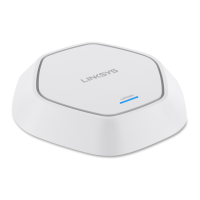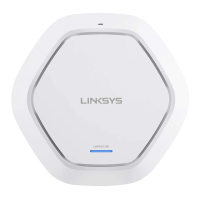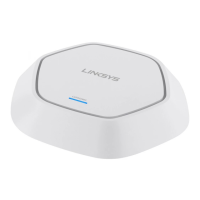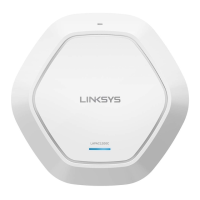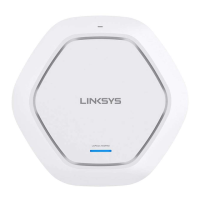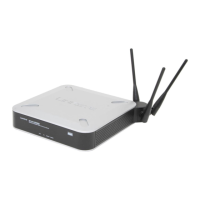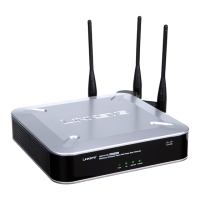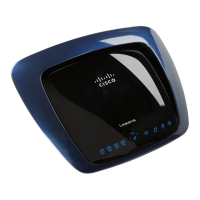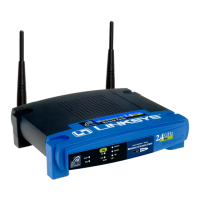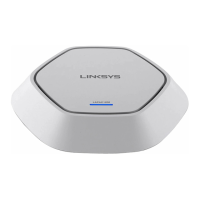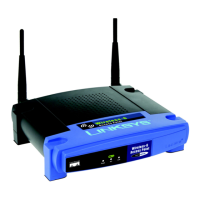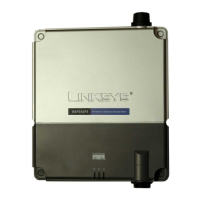48
DTIM Interval
Enter the Delivery Traffic Information Map (DTIM) period, an
integer from 1 to 255 beacons. The default is 1 beacon.
The DTIM message is an element included in some beacon
frames. It indicates which client stations, currently sleeping in
low-power mode, have data buffered on the access point await-
ing pickup.
The DTIM period that you specify indicates how often the
clients served by this WAP device should check for buffered
data still on the access point awaiting pickup.
For example, if you enter 1, clients check for buffered data on
the access point at every beacon. If you enter 10, clients check
on every 10th beacon.
RTS Threshold
Enter the Request to Send (RTS) Threshold value, an integer
from 1 to 2347. The default is 2347 octets.
The RTS threshold indicates the number of octets in a Medium
Access Control Protocol Data Unit (MPDU) below which an
RTS/CTS handshake is not performed.
Changing the RTS threshold can help control traffic flow
through the access point, especially one with a lot of clients. If
you specify a low threshold value, RTS packets are sent more
frequently, which consumes more bandwidth and reduces the
throughput of the packet. However, sending more RTS packets
can help the network recover from interference or collisions that
might occur on a busy network, or on a network experiencing
electromagnetic interference.
Fragmentation
Threshold
Enter the fragmentation threshold, an integer from 256 to 2346.
The default is 2346.
The fragmentation threshold is a way of limiting the size of
packets (frames) transmitted over the network. If a packet
exceeds the fragmentation threshold you set, the fragmentation
function is activated and the packet is sent as multiple 802.11
frames.
If the packet being transmitted is equal to or less than the
threshold, fragmentation is not used. Setting the threshold to the
largest value (2,346 bytes, which is the default) effectively
disables fragmentation.
Fragmentation involves more overhead because of the extra
work of dividing up and reassembling of frames it requires, and
because it increases message traffic on the network. However,
fragmentation can help improve network performance and
reliability if properly configured.
Output Power
Select the output power of the access point. If many access
points exist, lower power can reduce the signal interference
among them.
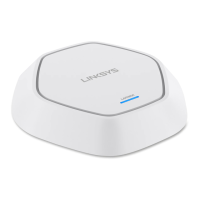
